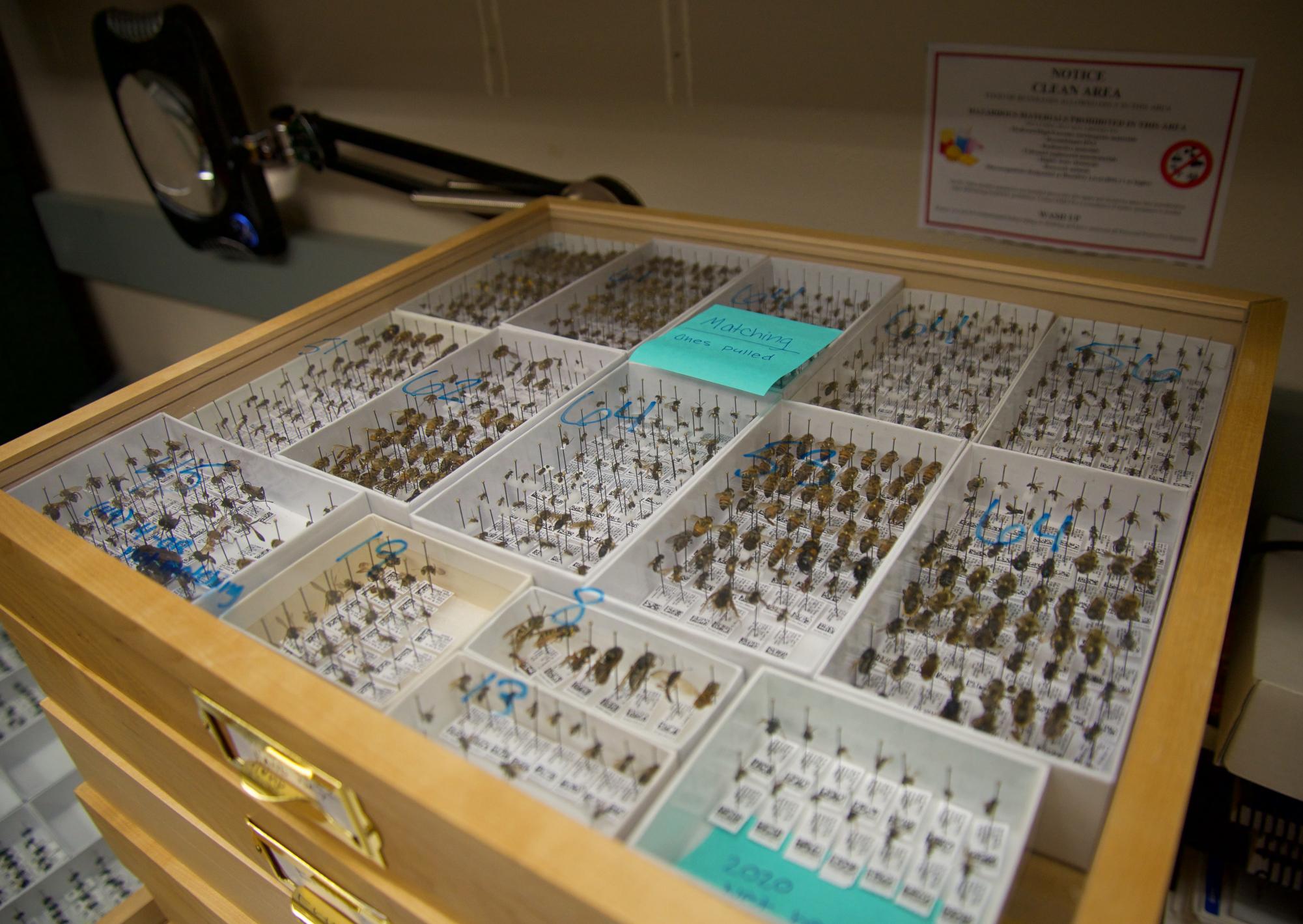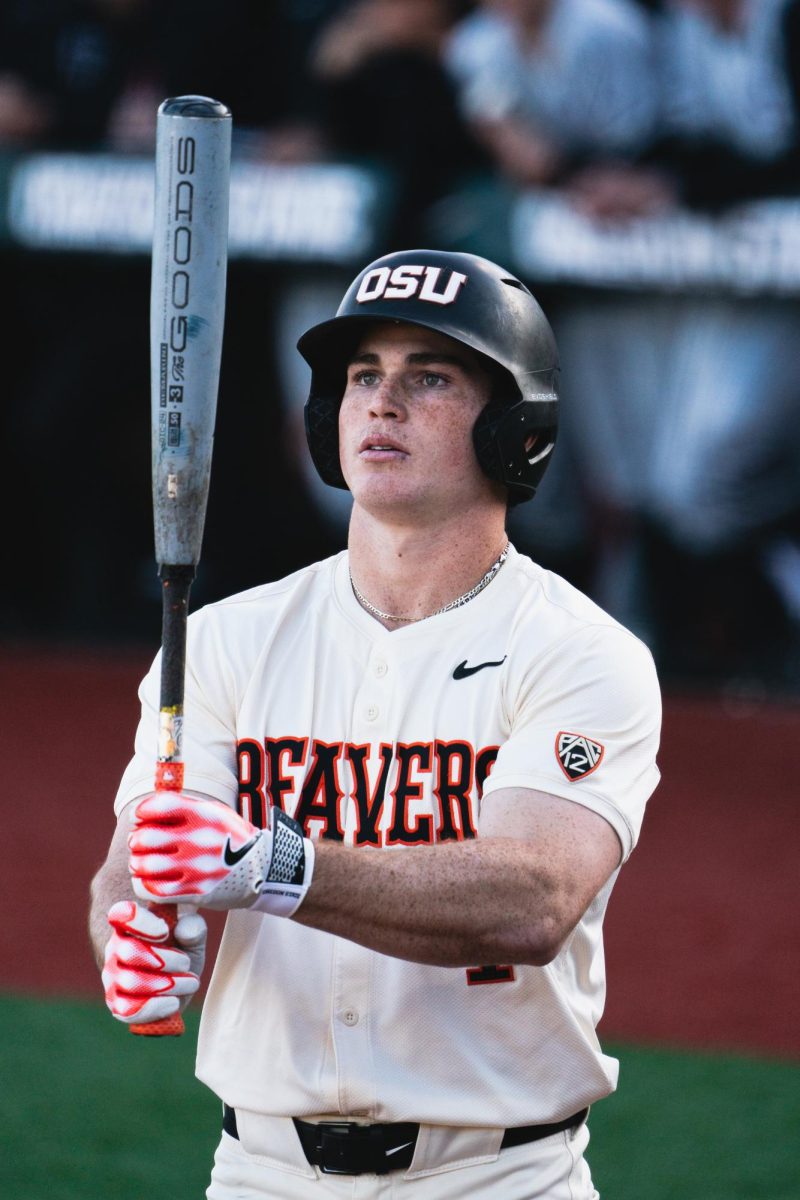Most bees don’t really look like bees. In fact, the Pollinator Health Lab at Oregon State University has boxes upon boxes of specimens that look more like gnats or beetles than bees.
Linc Best, director of the Pollinator Health Lab, pulls out one of these shallow boxes and opens it, uncovering lines of delicately arranged bees that shine a brilliant indigo underneath the fluorescent lab lighting. They’re not the fat, fuzzy little bumblebees wearing yellow and black stripes, in fact, there’s not a spot of yellow on any of the bees in this box.
“How do you know if a bird is a seagull or a sparrow? Based on morphology? No, you don’t think about what kind of beak it has. You just recognize it for what it is.” Best said, “When I’m going through this box, I know what they all are.”
In fact, alongside his work in the lab, Best is often asked to come and identify bees for a variety of projects across the state. It’s a unique skill, knowing what they all are, and not one that’s easy to master. In fact, even Best can’t know what every bee is without the help of genetic testing or microscopes.
However, with the help of the new bee identification keys he has helped design, it might make it a little easier for those who haven’t yet mastered the art.
Jim Rivers, an associate professor of wildlife ecology and former student of Best’s bee identification courses, approached Best about creating a new identification key when he noticed the class was using an identification guide for Canada.
“So we go through the guide and (Best) is like, ‘cross this one out, cross that one out’,” Rivers said.
Not only was there a lack of reputable identification keys for this region, but many of them often have the identifier squinting at the page, flipping from index to appendices.
“In a lot of old keys, this image might be like this big and it’s so annoying,” Best said, making a circle with his fingers about the size of a half-dollar.
Best and Rivers, in collaboration with a number of other specialists and imaging technicians, have published three identification keys. Two are dedicated to bumblebee identification alone (male and female) and one is for bee genera (the biological rank above species and below family).
“I think we include like 60 genera in the key, it’s a lot.” Best said.
It can be cumbersome, flipping through pages trying to match one specimen to one of sixty pictures (even if the pictures are big). The team has tried to overcome this problem by laying it out similar to a choose-your-own-adventure novel.
On the first page of the genera identification key, images of two wings (one with 3 cells on the tip and one with 1-2) take up the page. Taking a look at a specimen and seeing what type of wing it has will lead an identifier to either page 2 or 35.
If you have a bee with only 1-2 cells, congratulations! You only have 2 more steps to identify its genera. If you have a bee with 3 cells, you have 3 more steps to identifying its genera.
By going through the key in this way, a researcher can quickly identify what type of bee they’re looking at. According to Rivers and Best, it’s an improvement on the old keys.
The keys are primarily for researchers. Best teaches two labs and a field course every year that brings students to proficiency in identifying bees, and beyond.
“We grind you through the key, my lectures will use all of these images in the PowerPoint,” Best said.
But beyond their use in research and courses, the keys provide a good opportunity for motivated members of the public to identify and learn about bees. Oregon State University is involved and funds a number of pollinator-related projects– the Pollinator Health Lab that Best works in is only one.
Best said that, if he’s learned anything from this project, it’s “don’t underestimate the public’s interest, and also ability. But that has to be communicated in a way that also makes it compelling.”
The new bees keys are available for free and can be downloaded off the Master Melittologist Program’s website.



















































































































